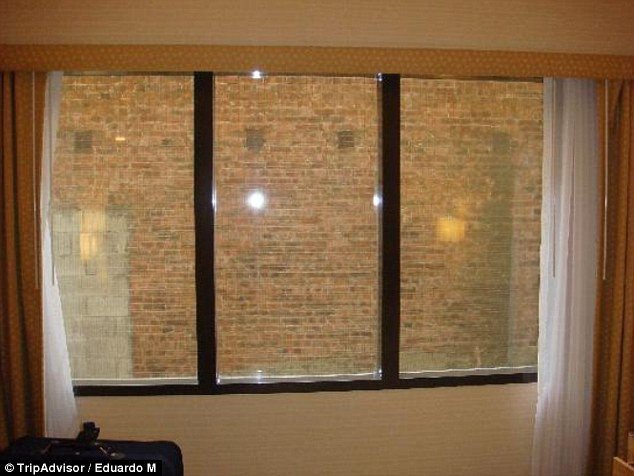Happy Travelers
Following the UX design process to enhance a product or service using virtual reality
I was tasked with identifying a pain point of an existing product or service that would benefit from using virtual reality.
After brainstorming, I thought of an issue I had recently experienced when checking into a hotel. When we got to our room we opened the blinds to a view similar to the picture below.
Needless to say my company and myself were not very pleased.
I decided to continue with some research to find out how many other people have had similar experiences.
I started by writing up some interview questions to ask people about their experience traveling. Some of the more important questions included:
What are some difficulties you face when trying to decide where you want to go and what hotel you’d like to book?
What expectations do you have when using a booking website or app?
What are your fears when booking a flight or hotel?
Can you walk me through a time when you traveled and were disappointed when you reached your destination?
After conducting 10 interviews consisting of people from ages 32 to 78 I was able to make an affinity map using information pulled from the interviews.
When asking people what a disappointing aspect of booking was upon arrival…
5 out of the 10 people interviewed said that there had been a time when they were disappointed by the condition of a place they visited.
4 said they would like more accurate pictures of the place they want to book.
3 of them said they’ve felt misled by the pictures advertised online.
Some key quotes included:
“I’ve been disappointed in misleading information or pictures” -Samantha B. (age 36)
“The room wasn't ready when we arrived” -Debbie R. (age 66)
“I wish the pictures were more accurate” Adam W. (age 33)
Early design:
I started with some early wireframe sketches and user flows. Then I made a paper prototype to see how a user would interact with an app made to show you a live, realtime view of a place around the world such as a hotel room, beach, or a restaurant etc…
I then used “balsamiq” (a digital prototyping tool) to create a clickable low fidelity prototype of my app.
I’ve built my prototype.
Now I will continue to learn from feedback I receive through user testing.
I will continue to iterate on my designs and incorporate changes using information gathered from research data.
Go from prototype to a higher fidelity model, then move on towards a final product.










